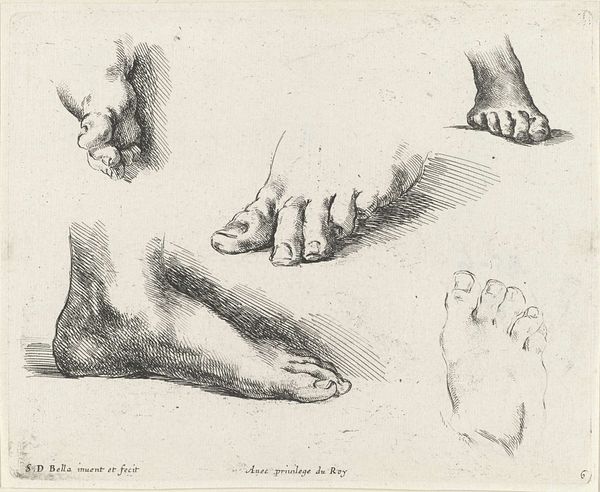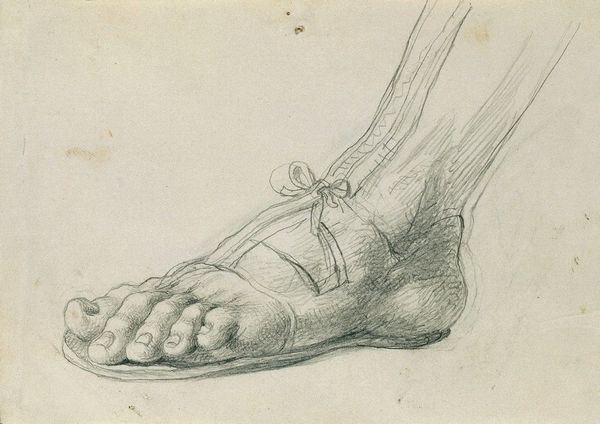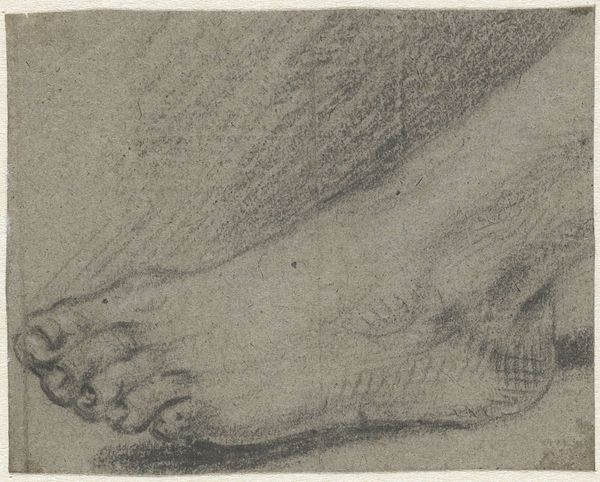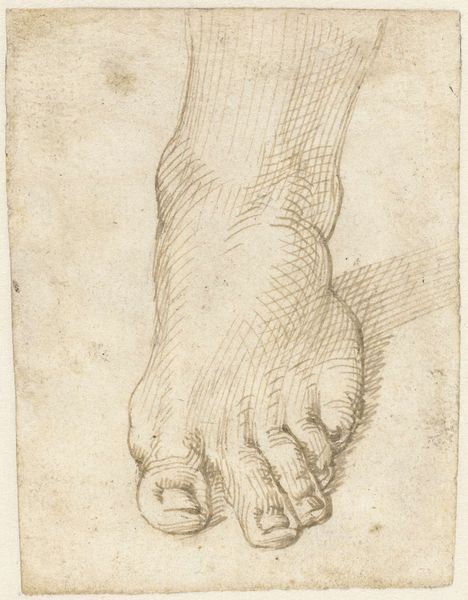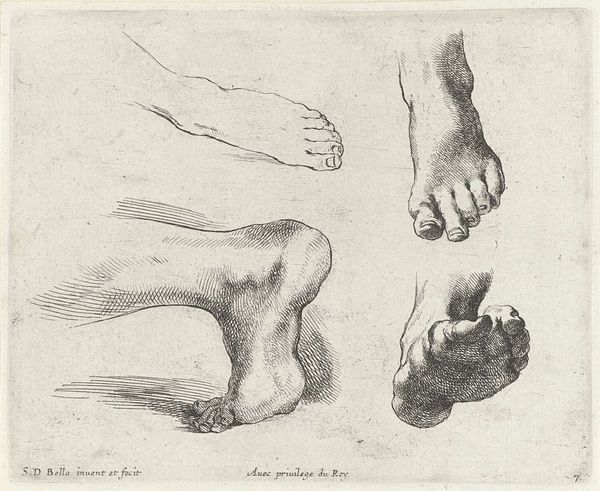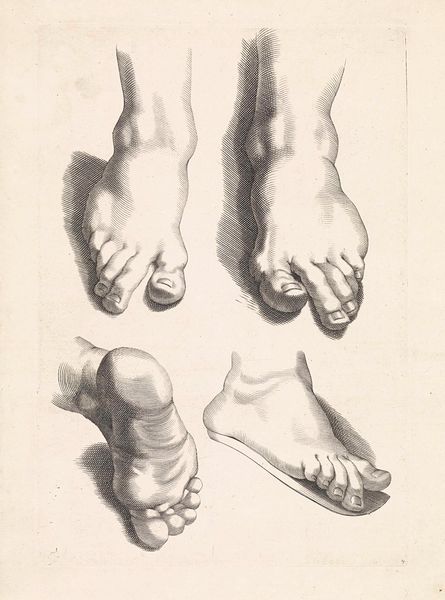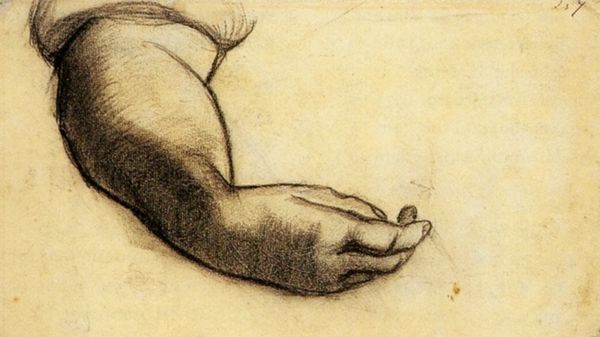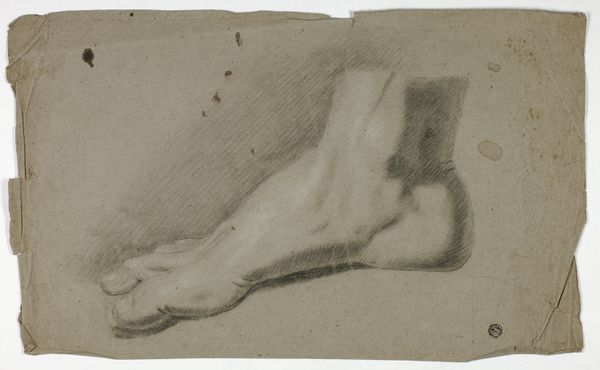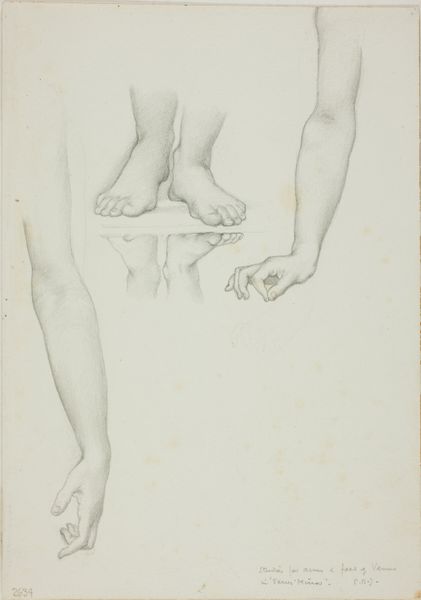
drawing, dry-media, pencil, graphite
#
pencil drawn
#
drawing
#
pencil sketch
#
charcoal drawing
#
figuration
#
form
#
dry-media
#
pencil drawing
#
pencil
#
line
#
graphite
#
academic-art
#
realism
Copyright: Public Domain: Artvee
Curator: What immediately strikes me is the delicacy and precision, particularly in the gradations of shadow and light that model the form. The linear quality—those crisp, confident strokes—gives it a remarkable presence despite the humble medium. Editor: Yes, that use of pencil and graphite—materials accessible and affordable—point to its likely origin as a study piece. We're looking at “Fußstudie”, a work attributed to Johann Peter Krafft. Curator: A study in form, indeed! The composition draws my eye right in; I want to trace the line from heel to toe. Look at how those hatching lines define the structure, the sinews... and, honestly, it does feel rather clinical to look at. Editor: Indeed, that stark realism serves a specific purpose; the artist diligently studied anatomy in an era where the accurate depiction of the human body was paramount, both in art and scientific learning. It was academic, and pedagogical; the circulation of studies such as these disseminated artistic techniques, acting as source material for an entire generation of artisans and crafters. Curator: The material choice too is significant; pencil allowed for relative ease of correction, lending itself to meticulous study like this. Think about the haptic connection; how much more in tune with the subject one might become, through the close inspection this technique facilitated? Editor: I see it more in relation to the legacy of Neoclassical drawing, and the desire to achieve near-photographic accuracy. I admire the piece for its focus on clear, structured, self-sufficient form. This isn't just a foot, it's an almost Platonic ideal of a foot, realized in graphite on paper! Curator: Ideal or no, its creation reflects a historical culture of labor; it signifies access, education, and material reality of early-19th century workshop life. Editor: A drawing like this, born from the intersection of close observation, deft skill, and clear aesthetic sensibility is a beautiful paradox, don't you think? Curator: Perhaps it is that combination that elevates it beyond the realm of mere anatomy. The precision of touch and a material grounded firmly in its era.
Comments
No comments
Be the first to comment and join the conversation on the ultimate creative platform.

